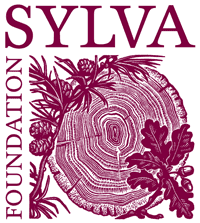Trees and Forestry

People that we have met and talked to about the OneOak project have many different views. For some people it is quite shocking that we are cutting down a tree. Perhaps it is the first time they have been confronted with the question of where wood comes from - even though wood is probably part of their everyday lives. It may be easy for some to expect that we should import our wood from elsewhere - almost out of sight, out of mind, or a form of NIMBYism. For others it is seen as a good thing that we are using locally-grown wood, with the benefits that this brings for the environment and our local rural economy.
Our answers to some common questions
Why are you cutting it down?The OneOak tree is one of some dozen trees in the plantation on the Blenheim Palace estate. Others have already been cut down for timber in recent years, and more will be cut down over the next ten years. So, in one sense, the felling of this tree is nothing unusual - it is just that we have made more people aware of it!
The short answer - we are cutting it down for timber and to educate the public about growing trees for wood.
The OneOak tree is now one of around 12 mature trees in the plantation. Some 222 years ago, foresters will have planted about 2000 oak seedlings. Over this time, trees will have been removed to make room for others to grow and will have produced various wood products along the way.
Also during this time, foresters will have been planting more trees on the estate every year. So overall, the forests on the estate are kept in a perpetual cycle of renewal and rebirth.
Growing wood locally is also sustainable in an environmental sense. The resulting wood products can substitute for timber imported from overseas - saving wood miles (reducing carbon footprint) and supporting our local rural economy. The wood products can also substitute for other materials, such as plastic, brick or concrete - reducing our carbon footprint.
Finally, we know from recent evidence from our wildlife experts that woodland biodiversity is declining. Woodlands birds, butterflies and plants are all becoming less common. These changes have been linked with lack of management in our woodlands. Many people do not realise that the woodlands that we appreciate for their wildife or landscape beauty, are the way they are precisely because they have been managed by man for hundreds of years.
Oak trees can live for more than 1000 years. Blenheim Palace estate supports many trees over 500 years old.
Foresters use the term "economically mature" to mean that a tree has slowed its growth to a rate at which little financial benefit is returned if the tree is allowed to continue to grow.
Our OneOak tree was planted as a crop - albeit a very slow growing crop. In 2010 it will be economically mature.
Trees and forestry in Britain - the big picture
The UK imports over 9 million m3 of roundwood every year, and timber is the 6th largest import into the country.
Paradoxically, our woodlands have been neglected in recent decades, timber prices have been low, and our domestic woodchain has become
increasingly disjointed. A lack of interest by owners has meant that woodland management has been of low priority, and in many cases
strong evidence suggests that biodiversity has declined as a result.
Britain is the second-least wooded country in Europe with 12% woodland cover. For comparison, France's forested area exceeds 40%. English woodland cover is even less at 9%, whilst Oxfordshire is below average for England with only 6% woodland cover.
It is estimated that there are 63,000 woodland owners in England, who own 82% of our woodlands. We know little about these owners or their motivations. We do know that over half a million hectares (649,000ha) of woodland in England are potentially not managed.
The forestry sector, meaning all those who manage or care for trees, will have an unprecedented role in the 21st Century as the importance of our tree resource is fully realised. Trees provides habitat for wildlife today, and will be crucially important as biodiversity adapts to climate change in the future. Trees and woodlands also provide environmental services, such as protection from flooding, maintaining drinking water quality and soil protection. Wood is the greenest material of use to mankind, providing carbon-lean products for construction, heat and energy.There are therefore strong arguments for improving our ability in the UK to produce wood – both to substitute for imported wood, and to substitute for other materials to reduce our carbon footprint. As an added bonus our woodlands will tend to have a higher value for biodiversity and be more robust to climate change.
The Sylva Foundation believes that one of the important steps in making our forests more sustainable is to raise the profile of forestry and increase public understanding about forest management.



